Relying on the trade machine at ESPN.com is probably the simplest way for NBA fans to verify whether or not a trade will work under league rules, but it’s a worthwhile exercise to examine and understand the primary tool in the NBA’s Collective Bargaining Agreement that determines a trade’s viability — the traded player exception.
Teams with the cap room necessary to make a trade work don’t need to abide by traded player exception rules. However, if a team makes a deal that will leave its total salary more than $100K above the salary cap, the club can use a traded player exception to ensure the trade is legal under CBA guidelines.
There are two different types of traded player exceptions used in NBA deals. One applies to simultaneous trades, while the other applies to non-simultaneous deals.
In a simultaneous trade, a team can send out one or more players and can acquire more salary than it gives up. In a non-simultaneous trade, only a single player can be dealt, and the team has a year to take back the equivalent of that player’s salary, plus $100K.
Let’s look into each scenario in greater detail….
Simultaneous:
In a simultaneous trade, different rules applies to taxpaying and non-taxpaying clubs. A non-taxpaying team can trade one or more players and take back….
- 175% of the outgoing salary (plus $100K), for any amount up to $6,533,333.
- The outgoing salary plus $5MM, for any amount between $6,533,333 and $19,600,000.
- 125% of the outgoing salary (plus $100K), for any amount above $19,600,000.
Here’s a recent example of these rules in effect:
 Last July, the Kings traded Justin Holiday and Maurice Harkless to the Hawks in exchange for Kevin Huerter.
Last July, the Kings traded Justin Holiday and Maurice Harkless to the Hawks in exchange for Kevin Huerter.
Holiday is earning $6,292,440 in 2022/23, so if Sacramento had traded him on his own, the team could have taken back $11,111,770 (175% of his salary, plus $100K). However, that wouldn’t have been enough to cover Huerter’s salary of $14,508,929.
By adding Harkless and his $4,564,980 cap hit to their trade package, the Kings sent out a total of $10,857,420. The second rule listed above applies to that figure, meaning Sacramento was able to take back the outgoing amount plus an extra $5MM, for $15,857,420 in total — that was enough to cover Huerter’s salary, making the trade legal.
For taxpaying teams, the traded player exception rules for a simultaneous trade are simpler, albeit more restrictive. A taxpaying club can send out one or more players and take back 125% of the outgoing salary, plus $100K, no matter how much – or how little – outgoing salary is involved.
This rule was applied last August, when the Lakers sent Talen Horton-Tucker and Stanley Johnson to the Jazz in exchange for Patrick Beverley.
Because Horton-Tucker’s 2022/23 cap hit is $10,260,000, the Lakers would have been able to take back up to $12,925,000 in salary by trading him on his own. That’s 125% of his salary, plus $100K. But Beverley is earning $13,000,000 this season, so Los Angeles had to add a little more salary to its package to make the deal legal.
Johnson’s minimum-salary cap hit of $2,351,521 easily got the Lakers there — adding that figure to Horton-Tucker’s contract resulted in $12,611,521 of outgoing salary, so L.A. could have taken back as much as $15,864,401. Again, that’s 125% of the outgoing amount, plus $100K.
In simultaneous transactions, the traded player exception is used to instantly complete the deal, leaving no lingering loose ends. This form of the traded player exception isn’t what we’re talking about if we say a team “has a trade exception” available to use. Those outstanding trade exceptions come as a result of non-simultaneous deals.
Non-simultaneous:
In non-simultaneous deals, a team can trade away a single player without immediately taking salary back in return. The team then has up to one year in which it can acquire one or more players whose combined salaries amount to no more than the traded player’s salary (plus $100K).
For instance, when the Jazz sent Royce O’Neale to the Nets in exchange for a first-round pick last offseason, that was a non-simultaneous trade from Utah’s perspective, allowing the team to create a traded player exception worth O’Neale’s salary ($8,800,000).
The Jazz subsequently had a year to use that exception to acquire one or more players whose salaries total up to $8,900,000 (O’Neale’s salary, plus $100K). They’ve already made excellent use of it, absorbing Jarred Vanderbilt, Leandro Bolmaro, and Saben Lee into the exception, leaving just $202K left over. Trade exceptions expire after a year if they haven’t been used in full.
The Nets, meanwhile, were able to acquire O’Neale without sending out any salary despite being a taxpaying team because of a previous non-simultaneous trade they’d made involving James Harden, which had left them with a trade exception worth more than $11MM.
Putting the two together:
When evaluating an NBA trade, it’s worth remembering that two teams can view the deal entirely differently and that they’re allowed to divide a single trade into multiple parts to maximize their flexibility. For example, one team could consider a trade simultaneous, while the other team breaks the transaction down into two separate trades, one simultaneous and one non-simultaneous.
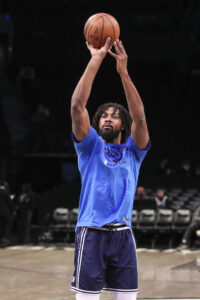 Let’s take a look at a recent real-life example, examining the eight-player September trade between the Rockets and Thunder.
Let’s take a look at a recent real-life example, examining the eight-player September trade between the Rockets and Thunder.
From the Rockets’ perspective, the trade broke down as follows:
- Traded David Nwaba ($5,022,000) for Maurice Harkless ($4,564,980) and Ty Jerome ($4,220,057).
- This trade is a simultaneous one for the Rockets, who were a non-taxpaying team, making them eligible to take back up to 175% of Nwaba’s salary, plus $100K. That figure works out to $8,888,500; Harkless and Jerome combine to earn $8,785,037, making them a snug fit.
- Traded Trey Burke ($3,423,750) and Sterling Brown ($3,000,000) for Derrick Favors ($10,183,800).
- This is another simultaneous trade for the Rockets, who didn’t have an outgoing player earning enough on his own to match Favors’ $10MM+ cap hit. Adding Burke’s salary to Brown’s results in a total of $6,423,750, allowing Houston to take back up to $11,341,563 (175% of the outgoing salary, plus $100K). Favors’ salary fits.
- Traded Marquese Chriss ($2,193,920) for Theo Maledon ($1,900,000).
- This segment of the deal actually represents a non-simultaneous trade for the Rockets, since they’re only trading one player and they’re taking back less salary than they’re sending out. That allows them to create a traded player exception worth $293,920, the difference between Chriss’ salary and Maledon’s. That amount is too small for Houston to realistically find a use for it, but it’s still technically a trade exception the team will have at its disposal until next fall.
Here’s how it looked from the Thunder’s perspective:
- Traded Maurice Harkless ($4,564,980) for David Nwaba ($5,022,000) and Sterling Brown ($3,000,000).
- In a simultaneous trade of Harkless, the non-taxpaying Thunder were permitted to take back $8,088,715, which is 175% of his salary, plus $100K. That’s an ideal match for Nwaba and Brown, who are earning a combined $8,022,000.
- Traded Theo Maledon ($1,900,000) for Trey Burke ($3,423,750).
- This doesn’t look on the surface like a match, given that Burke’s salary is nearly double Maledon’s. But 175% of Maledon’s salary is $3,325,000. Add another $100K and you get $3,425,000, which covers Burke’s cap hit in a simultaneous trade by a grand total of $1,250.
- Acquired Marquese Chriss ($2,193,920) using the minimum salary exception.
- Players who are earning the minimum salary on a one-year or two-year contract can be taken in using the minimum salary exception, with no outgoing salary required. That was the case for Chriss, who was in the second season of a two-year, minimum-salary contract.
- Generated traded player exceptions worth $10,183,800 and $4,220,057.
- Because the Thunder needed only two outgoing salaries to account for all four incoming players, that leaves Derrick Favors and Ty Jerome as essentially being traded for “nothing.” As a result, Oklahoma City was able to create trade exceptions worth each of their outgoing salaries, treating the trades of Favors and Jerome as non-simultaneous.
More notes on traded player exceptions:
- A team’s outgoing salary for matching purposes is the guaranteed salary rather than the total salary. For example, a player with a $2MM partial guarantee on a $10MM salary would only count for $2MM for salary-matching purposes for the team trading him (the team acquiring him would still have to account for him as $10MM in incoming salary). Between the end of a team’s season and June 30, the outgoing salary for a traded player is the lesser of his full current-season salary and his guaranteed salary for the next season. We have more details on this rule in a separate glossary entry.
- When determining whether a team is over the cap or the luxury tax line for traded player exception purposes, the team’s total salary after the trade is the deciding factor.
- Trade exceptions created in non-simultaneous trades can’t be combined with one another, with other exceptions, or with a player’s salary; they can’t be used to sign a free agent (except in a sign-and-trade); and they can’t be traded outright to another team.
- The salary in a sign-and-trade can sometimes be subject to base year compensation rules. In that case, the player’s outgoing salary for trade purposes is either his previous salary or 50% of his new salary, whichever is greater. For instance, when the Cavaliers signed-and-traded Collin Sexton to the Jazz in the Donovan Mitchell blockbuster, Sexton’s incoming salary from Utah’s perspective was $16,500,000, but his outgoing salary from Cleveland’s perspective was just $8,250,000.
- Teams that are under the cap before a trade and go over the cap as a result of the trade can’t create a trade exception as a result of that deal.
- For salary-matching purposes, future draft picks or the draft rights to an unsigned player aren’t taken into consideration.
The traded player exception is one of the CBA’s more complicated tools and can make it challenging for over-the-cap teams to navigate the trade market. It’s undoubtedly simpler to use an online trade machine to determine whether a deal is legal, but examining the rules and figuring out exactly how a blockbuster trade breaks down can provide rewarding insight into an NBA club’s management of its cap.
Note: This is a Hoops Rumors Glossary entry. Our glossary posts will explain specific rules relating to trades, free agency, or other aspects of the NBA’s Collective Bargaining Agreement. Larry Coon’s Salary Cap FAQ was used in the creation of this post.
Earlier versions of this post were published in 2012, 2018, 2020, and 2021.
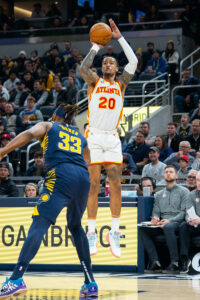 Collins is only 25 years old, but he’s been in trade rumors for at least three years now. He’s a good player, he just doesn’t fit very well on Atlanta’s roster anymore.
Collins is only 25 years old, but he’s been in trade rumors for at least three years now. He’s a good player, he just doesn’t fit very well on Atlanta’s roster anymore.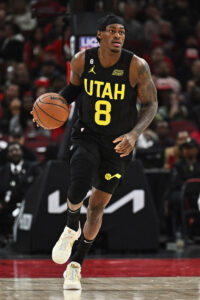
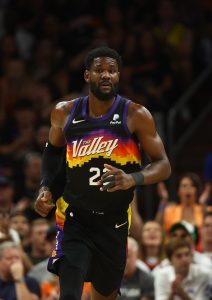
 Last July, the Kings
Last July, the Kings  Let’s take a look at a recent real-life example, examining the
Let’s take a look at a recent real-life example, examining the  2022/23: $2,628,597
2022/23: $2,628,597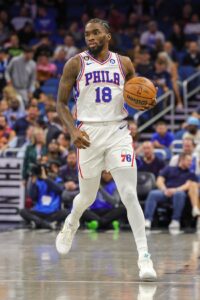
 2022/23: $47,063,478
2022/23: $47,063,478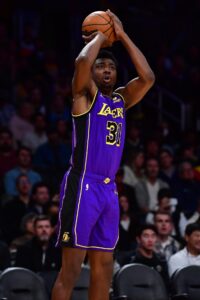 2022/23: $2,133,278
2022/23: $2,133,278